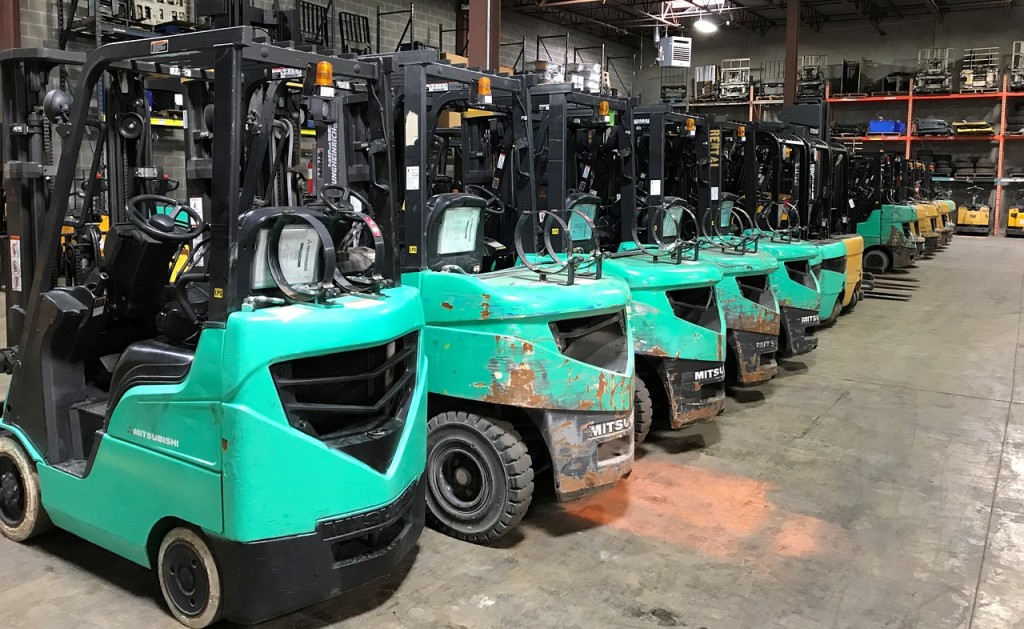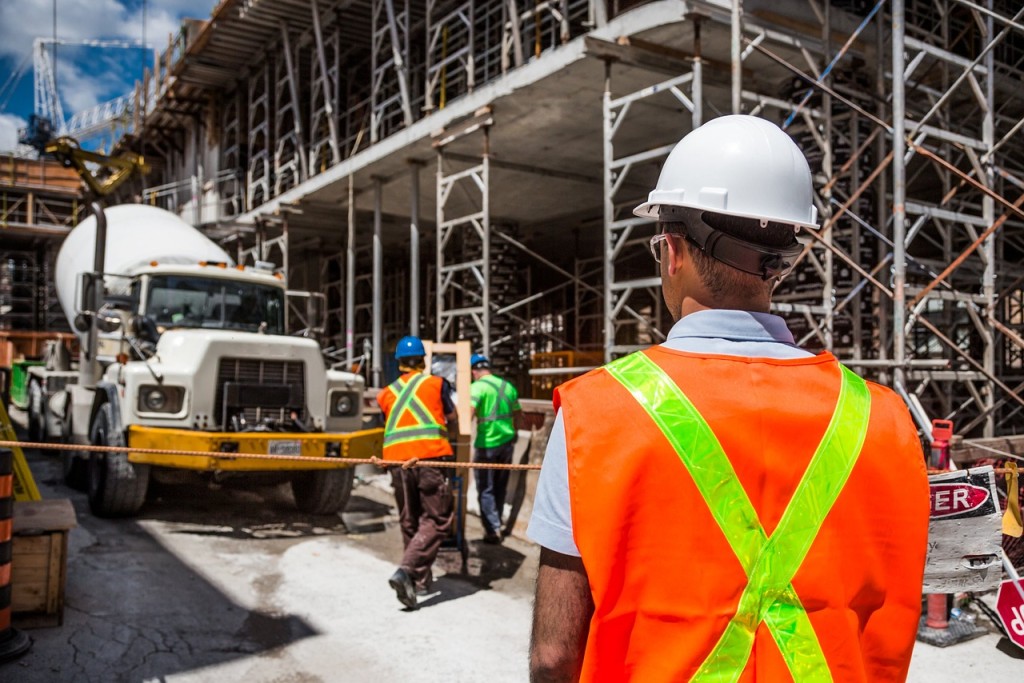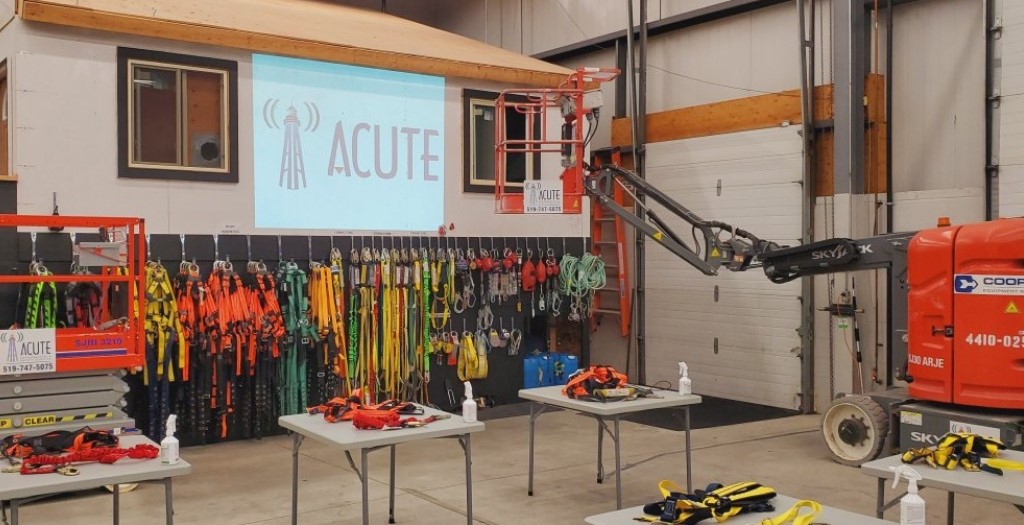If you are a supervisor in charge of supervising safety, there are several workplace safety procedures and measures you need to follow in your workplace.
This blog will look at three of the most common workplaces (office spaces, warehouse jobs, and construction sites) and explain 5 workplace safety measures for each one that supervisors should consider implementing.
Click on each corresponding link to jump ahead.
If you have any questions regarding supervisor safety training or workplace safety, contact the professionals at ACUTE Environmental today! We have over 100 years of combined experience and we offer health and safety training, rescue services, and consulting services.
Supervising Safety
1. Office Spaces

Jobs that require workers to work in an office setting present unique workplace safety challenges. Although these jobs are not as physically demanding as most, they still require supervisors to enact safety measures.
If you are in charge of supervising safety for an office, consider the following:
Ergonomic Workstations
If you are a supervisor in an office job, tasked with supervising safety concerns, you likely hear a lot of your workers complaining of a sore back or neck. This is because the chairs they sit in and the desks they work on are not designed ergonomically.
Ergonomic workstations promote the well-being of office workers and reduce the risk of musculoskeletal disorders. Adjustable chairs, desks, and computer monitors allow employees to maintain proper posture and avoid repetitive strain injuries.
Given this, employers should provide ergonomic assessments and education to ensure their employees are aware of proper workstation setup and encourage regular breaks to avoid prolonged sitting.
Proper Lighting
Sufficient lighting is essential in office spaces to prevent accidents and promote a productive environment. If you are in charge of supervising safety, make sure your office has well-lit areas, especially in:
- Stairwells,
- Hallways, and
- Common areas.
Quality lighting will minimize the risk of slips, trips, and falls. Adequate lighting at individual workstations also reduces eye strain and enhances visual comfort. In fact, research shows that an office should have 300-500 lux of illumination at all times.
Electrical Safety

Incorporate electrical safety measures to prevent electrical hazards – Image by 8ocho8 from Pixabay.
In office settings, electrical safety measures are crucial to prevent electrical hazards.
Given this, regular inspections should be conducted to identify and address any:
- Faulty wiring,
- Damaged outlets, or
- Overloaded circuits.
For supervising safety purposes, employees and supervisors should be educated about electrical safety, including guidelines for using and maintaining office equipment and reporting potential electrical issues promptly.
Fire Safety
Similar to electrical safety, when it comes to office work, fire safety measures are very important to have. Fire safety features are vital in office spaces to protect employees and property. Some essential fire safety precautions include:
- A properly maintained fire detection and alarm systems,
- Clearly marked evacuation routes, and
- Accessible fire extinguishers.
When supervising safety, regular fire drills should also be conducted to ensure employees are familiar with evacuation procedures and assembly points. If you are the office supervisor, take it upon yourself to prepare your workplace for emergency situations.
Slips, Trips, and Fall Prevention
Slips, trips, and falls are common causes of workplace injuries in office spaces.
Supervisors must implement measures to minimize these risks, such as:
- Keeping walkways clear of obstacles,
- Ensuring proper maintenance of flooring surfaces,
- Applying adequate signage for wet floors or uneven surfaces, and
- Ensuring carpets or mats are secured to prevent tripping hazards.
By implementing these safety measures, supervisors will demonstrate their dedication to supervising safety.
It is important to note that workplace safety is a collective effort, and employers and employees should work together to maintain a safe office environment. Regular safety inspections, employee training programs, and open lines of communication can further enhance safety in office spaces.
2. Warehouse Jobs

Warehouse jobs require extensive safety training – Image by THAM YUAN YUAN from Pixabay.
If you are in charge of supervising safety for a job in a warehouse, you understand the unique workplace safety concerns tied to warehouse jobs. For instance, consider the following:
Adequate Training and Certification
Proper training and certification are essential for warehouse workers to operate machinery, such as forklifts or pallet jacks, safely. Given this, supervisors should receive comprehensive training on:
- Equipment operation,
- Load handling techniques, and
- Safety protocols.
Ongoing training programs should be implemented to reinforce safe practices and address any new hazards or technologies.
Well-Designed Traffic Management
If you are in charge of supervising safety, consider implementing efficient traffic management guidelines. These can help prevent accidents and collisions from occurring.
Clearly marked pedestrian walkways and vehicle lanes, as well as proper signage, should be in place.
Separate areas for pedestrians and vehicles, such as loading docks, should be clearly labelled.
Implementing speed limits and providing adequate visibility, such as mirrors or cameras, can also enhance safety.
Proper Material Handling Equipment

Always make sure you have the proper material handling equipment – Image by Bruce Emmerling from Pixabay.
Warehouse safety relies on the availability and proper maintenance of suitable material handling equipment.
Forklifts, pallet jacks, and other machinery should be regularly inspected and well-maintained to ensure they are in good working condition. Also, make sure your equipment includes safety features such as:
- Lights,
- Horns,
- Seat belts, and
- Seats.
Ensure these safety features are functional and in good working order. Also, if you are in charge of supervising safety, ensure that employees are trained in proper lifting techniques to prevent strains and injuries.
Storage and Shelving Safety
Another key aspect of warehouse safety is ensuring safe storage and shelving systems. The last thing you want in a warehouse is for large shelving units to fall, resulting in damaged products, injuries, or even death.
Racking systems should be designed and installed correctly to withstand the weight of stored materials and minimize the risk of collapse. Regularly inspect the following for any damage or instability:
- Shelves,
- Racks, and
- Pallets.
To further promote safety, all employees should be trained on how to stack items safely and avoid overloading shelves or pallets.
Hazardous Materials Management
Warehouses that handle hazardous materials should have appropriate safety measures in place. This includes:
- Proper storage,
- Labelling, and
- Handling procedures.
These safety measures must be in accordance with WHMIS and other relevant regulations. When supervising safety, employees should also receive specialized training on handling hazardous materials, including emergency response protocols and the use of personal protective equipment (PPE) specific to these substances.
It is important to note that workplace safety in warehouses also requires regular risk assessments, the establishment of safety committees, and fostering a culture of safety awareness among all employees. Supervisors must set an example for all employees and provide continuous improvement and feedback loops to help identify and address safety concerns promptly.
3. Construction Sites

Always promote safety on construction sites – Image by bridgesward from Pixabay.
If you are in charge of supervising safety on a construction site, you must understand the unique workplace safety concerns tied to working in the construction industry.
If you are in charge of supervising safety at a construction site, consider the following:
Fall Protection Systems
Construction sites often involve working at heights, so fall protection systems are crucial. This includes the use of:
- Guardrails,
- Safety nets,
- Harnesses, and
- Lanyards.
Adequate training of workers and regular inspections of fall protection equipment are necessary to ensure their effectiveness.
Scaffolding and Ladder Safety
When supervising safety on a construction site, it is important to understand that properly erected and maintained scaffolding and ladders are essential for access to elevated areas.
Regular scaffolding and ladder inspections should be conducted to identify any defects or damage. Training should be provided on the safe setup and use of scaffolding and ladders, including:
- Weight capacity,
- Proper positioning, and
- Secure footing.
This will help ensure everyone on the job site is safe.
Hazard Communication and Signage

Make sure you clearly communicate hazards on the job site – Image by Gerd Altmann from Pixabay.
Clear communication of hazards and safety information is vital on construction sites. This includes posting visible signage for:
- Potential dangers,
- Restricted areas, and
- Safety procedures.
Material Safety Data Sheets (MSDS) should be readily available for hazardous substances used on-site. Effective communication channels should also be established to ensure workers are aware of any changes or updates to safety protocols.
Personal Protective Equipment (PPE)
Construction sites require the use of appropriate personal protective equipment (PPE) to mitigate various hazards. This may include:
- Hard hats,
- Safety glasses,
- High-visibility clothing,
- Steel-toes boots,
- Gloves, and
- Respiratory equipment.
Employers should provide the necessary PPE, ensure its proper use, and educate workers on its importance and proper maintenance.
Equipment Safety and Operator Training
Construction sites also involve the use of various heavy machinery and equipment. If you are in charge of supervising safety, make sure that regular inspections and maintenance are being conducted to ensure their safe operation. Operators should be trained and certified for the specific equipment they operate, such as:
- Cranes,
- Forklifts,
- Pallet jacks,
- Lift trucks,
- Excavators, or
- Power tools.
Safety features on equipment, such as guards and emergency shutdown systems, should be functional and regularly checked.
When supervising safety, It is essential to conduct regular site inspections, promote safety culture among all workers, and ensure compliance with local regulations and industry standards.
Regular safety meetings, toolbox tasks, and incident reporting systems should be in place to address safety concerns promptly and continuously improve workplace safety on construction sites.
Work With ACUTE Environmental

You can rely on ACUTE for all your supervisor safety training requirements.
If you are in charge of supervising safety and are looking for high-quality online safety training or in-person safety training, book a course with ACUTE. Also, if you have any questions regarding what you need to assemble before safety training, contact us.
Here are some of the benefits of working with ACUTE:
- Open Door Instructor-Student Partnership – ACUTE’s training services emphasize client participation, staff foster relationships with clients and serve as a touchstone for advice anytime moving forward.
- Serving Your Team and Industry – With a vast array of clients in manufacturing, construction, health, academic, and government sectors, ACUTE brings the best safety practices from across the spectrum to your workplace.
- 100 Years Combined Experience – ACUTE provides comprehensive health and safety training, on-site safety services, and consulting services. With over 100 years of combined experience, our company staff offers more than theoretical or abstract ideas. ACUTE offers solutions!
- Track Record of Success – ACUTE is rated 4.9/5 stars on Google reviews, demonstrating a commitment to our clients, quality, and passion for training.
Take a look at our course calendar, and find a date that works for you! We offer courses such as:
- Advanced Working at Heights and Rescue
- Lift Truck Operator
- Elevating Work Platforms
- Confined Space Rescue
For a complete list of our training courses, click here.
Hours of Operation and Contact Information:
Monday-Friday: 8:00 AM – 5:00 PM
Saturday-Sunday: Closed
Phone: (519) 747-5075
Fax: (519) 747-4608
Email: info@acuteservices.com
What Our Customers Are Saying…
We were referred to ACUTE on behalf of our employer for an n95 mask fitting – the staff here are professional, personable, and informative.
I’d come back here for any safety-related training in a heartbeat.
Acute has been a staple in supporting my companies over the years and have always delivered quality and dependable service. Training programs are top shelf and a great facility for practical application. couldn’t recommend them more. keep up the great work folks.
Acute is recognized and respected as a people organization and they have been doing it right for a long time.

